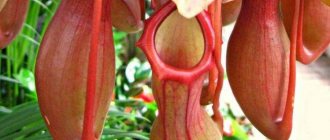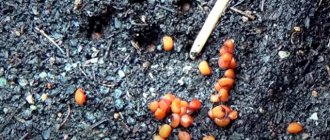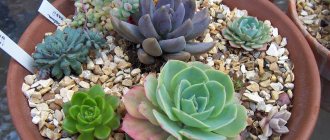- September 16, 2018
- Houseplants
- Natali Michaelis
Monstera is a vine with rather large and beautiful leaves. It is valued by many gardeners for its unpretentiousness and exotic appearance. If you provide an indoor flower with good conditions, it will grow quickly. In some cases, the plant may bloom, although it is grown primarily as an ornamental foliage crop. A huge vine with large cut leaves - that’s what a monstera is. Home care involves creating a microclimate close to the tropical. Read our article about how to do this correctly for a novice gardener.
Botanical description
Monstera is a prominent representative of the large Araceae family, whose natural habitat is considered to be the warm and damp forests of South and North America. This flower is actively used for landscaping offices and apartments.
The leaves are quite large in size (up to 1.5 meters in diameter), as well as a leathery dark shell. When the plant is in the young phase, they are heart-shaped and whole, but over time the shape of the leaf changes noticeably, becoming more interesting - numerous holes of various sizes appear, as if cut by a sharp object. The cuttings have an oblong shape, which can reach 1 meter in adult plants.
The stems are strong and curly. Aerial roots descend from the main nodes and have a cord-like shape. They always strive for the surface of the soil, after which they take root with the main stem as soon as they reach it. Aerial roots perform several important functions: receiving additional nutrition, moisture from the air, and also creating strong support.
Monstera can produce several dozen aerial roots, but even this number will not be enough to hold the heavy stem of the vine. In this regard, some of the roots do not sink into the soil, but are attached to the wall like suction cups.
Monstera blooms extremely rarely. During this period, cob-shaped inflorescences are first formed, which are covered with a greenish blanket, after which the flower opens over time. If the inflorescence has not been removed, then over time the fruit will ripen, which is a cob of berries.
Like most other vines, monstera needs good support. Setting the direction of growth by tying the main stem must begin as early as possible, since over time it becomes lignified and becomes less flexible. To create support, it is best to use a rigid mesh, which is stretched using strong cords.
Types of Philodendron
This plant, belonging to the Araceae family, is native to the equatorial part of Central and South America. Species diversity is represented by 30 species, of which only a few are adapted to indoor maintenance:
- Monstera tenuis - slender;
- Monstera obliqua - oblique, also unequal;
- Monstera deliciosa - tender, also beautiful;
- Monstera adansonii - feather-like or (Monstera pertusa) feather-like.
Monstera species and varieties video review:
Currently, selection has given gardeners plants with colored foliage, but for now, monsteras with dark green foliage are more common in interiors.
Monstera varieties
Answering the question of how to care for monstera, it is worth noting that there are more than 50 varieties of this ornamental plant in the genus. They differ markedly from each other in appearance, structure, size, and so on. However, most of them grow only in natural habitats.
Only five species are used as pets.
- Delicious. Young leaves are heart-shaped without characteristic cuts, but over time they become deeply dissected. The leaves reach 60 centimeters in diameter. Flowering is accompanied by the formation of a cob-shaped inflorescence, which does not exceed 25 centimeters in length and is always wrapped in a blanket of light leaves with a greenish tint. In an apartment, the plant will not exceed 3 meters in height. If you properly care for the monstera, you can admire its flowering every year. An artificial hybrid form has recently been developed. It grows more slowly, is more demanding of care, but has better decorative characteristics, unlike its predecessor.
- Adanson. This variety is characterized by thin ovoid leaves, on which there are many small holes. The inflorescence has a cob-shaped shape and reaches 13 centimeters in length. In home habitats it practically does not bloom.
- Borziga. One of the varieties of delicious monstera. The main differences from other representatives are small leaves and a thinner stem.
- Oblique. The leaves are oblong, lanceolate or elliptical, without cuts. Attached to the main stem using short petioles. The spadix consists of 2-3 flowers, reaching a length of 4 centimeters.
- Punched (holey). The main distinguishing feature of this species is the unequal leaves, widened at the base. Numerous holes are unevenly distributed across the entire surface, giving the flower a unique decorative appearance. The inflorescence is covered with a white blanket and is of medium size.
Did you know that the cobs of the delicious monstera are actually edible? These plants are grown in their homeland for industrial purposes. The berries have a sweet and sour taste, similar to a mixture of pineapple and strawberries. At least 10 months must pass from the moment of flowering to the full ripening of the fruit. Due to the large amount of calcium oxalate in the fruit, there may be a slight burning sensation in the mouth even from fully ripe berries. Remember that unripe fruits are extremely poisonous! The best way to determine the degree of ripening is to try to separate a few scales from the cob. For ripe fruits they will open without problems.
Actions after purchase
You can buy monstera in almost every flower shop. How to care for a plant immediately after purchase? This question worries many, because the subsequent development of the flower will depend on your actions. Remember that a small pea sprout will quickly grow into a large vine. However, this will require creating the proper quality of caring for monstera at home (pruning, temperature conditions, watering, and so on).
First of all, you should pay attention to 4 main parameters that are required to be fulfilled immediately after purchasing a pet:
- Transfer. It is recommended to transplant the flower into another pot immediately after purchase, since a long stay in the substrate for transportation can negatively affect the development of the vine. The capacity is selected taking into account rapid growth. Do not forget that before transplanting into a pot, you should pour a layer of drainage, which consists of broken bricks or crushed stone.
- Prevention of diseases. When examining a flower while still in the store, the initial stages of disease development or traces of pest activity may go unnoticed. In order to prevent both at once, it is necessary to alternately treat the monstera with small doses of a fungicide and an insecticide.
- Choosing a location. It is necessary to select a sufficiently illuminated and warm place that would allow further installation of the support. Most often, this flower is located in the most illuminated corner of the room. Remember that moving a grown vine will be extremely inconvenient and difficult.
- Humidity. In order to speed up the adaptation process of the flower, it is necessary to provide it with conditions of high humidity. It is recommended to add a growth stimulator to the water when spraying monstera, but this is at the request of the grower.
Over time, you will get a huge decorative vine that will fit perfectly into any interior if you follow the basic rules of care at home. The monstera flower will delight everyone who sees it with its beauty.
How to propagate a “monster”?
Monstera is really very popular, so be prepared for the fact that you will soon be asked to give a shoot of this miracle, or you yourself will want to increase the number of “monsters” in your apartment. It's very easy to do.
Monstera propagation by cuttings or aerial roots follows the same, completely uncomplicated, scenario:
- separate a lateral shoot or aerial root from the plant;
- cover the fresh cut with charcoal and let it dry a little;
- plant the shoot in a pot;
- cover it all with a glass jar on top to create greenhouse conditions;
- Water your baby regularly;
- After the shoot takes root, the jar can be removed.
Plant cuttings
Propagating monstera with aerial roots is easy.
The plant has taken root
That's all! The operation is completed, you can dance and drink champagne. And it’s not difficult at all, right?
Cultivation care
Most vines are considered quite unpretentious and easy to care for crops. The main difficulty will be to create strong supports for shoots growing at tremendous speed. You should also not forget about maintaining high soil and air humidity - all these are important rules of care. The monstera flower is considered one of the most unpretentious plants, but this does not mean that it does not require care.
Lighting
Have you thought about how to grow a monstera flower? How to care for it so that it pleases the eye with its beautiful green leaves? Monstera is a light-loving plant, so for full growth it will need a well-lit place, but it is better to avoid direct sunlight. A flowerpot with a flower should be placed in a room whose windows face south, west or east. It is highly not recommended to keep it in the northern part of the building. It is worth choosing the most illuminated area of the room. If the flower does not get enough light, the leaves will begin to noticeably become smaller, and the aerial roots will become weak and thin.
Temperature
What else does home care include? Monstera is a light-loving plant, but there are no strict requirements for maintaining the temperature regime. Although the flower grows noticeably faster at high rates. In autumn and spring, the favorable air temperature is +20…+25 °C. Liana reacts normally to the summer heat. In winter, it is strongly recommended to reduce the temperature to +17…+19 °C. Temporary cooling will be required for subsequent flowering. It is also necessary to avoid cold drafts at any time of the year.
The soil
When answering the question of how to care for monstera at home, one cannot fail to mention the quality of the soil. Depending on the degree of maturity of the vine, the composition of the soil also changes. For young plants, slightly acidic and neutral soil is best. It can be prepared at home by mixing humus, turf, peat and sand in equal quantities. Optimal acidity is considered to be 5.5-6.0 pH. Deciduous soil can also be included in the soil as the vine grows.
Conditions for flowering
On the Internet, many flower growers complain that the vine does not want to bloom. However, at home it is possible to achieve flowering only of the delicious monstera. To do this, you should create conditions that are as close as possible to a tropical microclimate:
- Bright lighting. The flower should receive a sufficient amount of diffused sunlight both in summer and winter. To do this, you can resort to using additional lighting using special lamps.
- High humidity. The liana needs daily spraying. On hot days, this procedure should be carried out several times a day.
- Loose soil. The soil for a houseplant should not only be nutritious, but also loose enough so that water and air can easily pass through it.
- Spacious potty. Perhaps Monstera is one of those crops that absolutely cannot tolerate crowded spaces. When replanting, the container should always be selected “for growth” so that the root system does not touch the walls of the pot.
- Aerial roots. They can be helped to take root directly in the pot or placed in water bottles. Under no circumstances should you cut off the roots!
If you follow all these rules, you will be able to grow a large and beautiful monstera. Caring for a plant at home (photo of the fruit is shown above) is not such a difficult task. However, if you chose this crop to enjoy beautiful flowering, you made the wrong choice, since flower stalks are formed exclusively on old specimens, and not on young plants.
Features of growth
Monstera in nature reaches several meters in length (height). In a greenhouse or in a large, bright house, it can also grow to this size. The vigor and vitality of the vine are amazing.
Its almost half-meter-long leaves are leathery and shiny, the holes in them form intricate patterns. There are different points of view on why vines have holey leaves. Most likely, the holes in the leaves reduce the sunlit surface of the Monstera leaf. Young plants have solid leaves, similar to philodendron leaves. Only the mature leaves appear in all their carved and perforated glory.
Monstera is shade-tolerant, like all tropical vines. It will be content with diffused lighting, but will grow poorly in a completely dark corner. With its aerial roots, the vine clings to supports in order to grow vertically, and feeds by lowering them into the ground.
In indoor conditions, the liana blooms very rarely. Monstera flower is a spadix with a white or cream veil. The monstera fruit ripens within 14 months. All this time, the plant should receive uniform lighting and adequate nutrition. The fruit looks most like a large ear of corn or an elongated pineapple. It also tastes like pineapple, banana and mango together. An unripe fruit can cause a burn to the mucous membrane.
Reproduction methods
What about care and reproduction at home? Monstera should be called not just an unpretentious plant, but a tenacious plant that perfectly adapts to almost all living conditions. The culture easily reproduces independently by vegetative means. At home, this can be done in five different ways:
- Apical cuttings. To do this, you need to cut off the top with several leaves, and then put it in a jar of water. As soon as the first roots appear, the cuttings can be planted in a large pot with light soil. What happens to the main stem after cutting off the top? Side shoots will begin to form on it, as a result of which the monstera will again begin to grow in height.
- Stem cuttings. This is the most common propagation method. It is used primarily to rejuvenate old specimens with bald leaves. The stem must be cut into pieces so that at least one bud remains on each. After this, the cuttings take root in a mixture of wet sand and peat, but before this, the planting material must be slightly dried and treated with coal powder. If there are aerial roots on the cuttings, then they must be laid around the perimeter of the flowerpot, lightly sprinkled with soil. Up to three specimens can be planted in one pot. To make the rooting process faster, the cuttings should create greenhouse conditions. To do this, the stems are covered with glass jars or polyethylene. Don't forget to regularly ventilate the cuttings.
- Lateral processes. You can root not only the upper part of the monstera, but also its side shoots. Such shoots can be found on any flower, even the youngest. All actions are performed by analogy with rooting the apical cutting.
- Leaves. The second most common method of propagating monstera after stem cuttings. The leaf is cut at the very base; a small part of the stem (5-8 centimeters) is captured. After this, the planting material is placed in a jar of water to form a dense tuber of roots. Only after a sufficiently developed root system has formed can the cuttings be planted in a pot with a light substrate.
- Air layering. Perhaps the most difficult method of propagation, not counting seed. First you need to select a side shoot that has several aerial roots. At the very base we wrap the stem with damp sphagnum, fixing it with cling film. Moss must be moistened daily with warm water. As soon as the first roots form, the shoot is carefully trimmed, treated with growth stimulants and planted in the soil.
The seed propagation method is used extremely rarely, so there is no point in discussing it. Seedlings grow quite slowly - in the first couple of years of life, a maximum of five leaves can form.
To prevent the cuttings from rotting in the jar, it is recommended to use boiled or well-settled rainwater. You should also add one tablet of activated carbon to the jar to prevent the development of various diseases. Before planting in the ground, the cuttings must be lightly washed with running water, and then soaked for 10 minutes in a pale solution of potassium permanganate.
Transfer
Spring transplantation of monstera is carried out regularly in the first three years. Each time, the diameter of the flower pot is increased. Over the next few years, Monstera begins to grow rapidly. Therefore, it is sometimes necessary to replant it twice a year. When the flower becomes very large, it is no longer replanted, only the upper part of the soil is replaced annually with fresh substrate.
The best way to transplant a monstera is to transship it:
- This manipulation must be carried out by two people, otherwise the plant can be damaged.
- Before transshipment, the vine is watered so that the soil in the pot is moistened.
- The pot is placed on its side and the plant is carefully removed along with the earthen lump.
- The prepared new container should have drainage at the bottom - a layer of pebbles or expanded clay.
- It is covered with a layer of soil, and an earthen ball with monstera is placed on top.
- The roots of the plant must be straightened, without this you cannot plant a monstera, it will not grow well.
- Then the container is filled to the top with soil, and it is compacted several times.
After transplanting, the plant needs to be watered abundantly until the water is in the pan.
The transplanted vine begins to grow well.
Diseases and other problems
What else does proper home care include? Monstera, like any other indoor plant, is susceptible to diseases and pest attacks.
To avoid such problems, you must follow a number of important rules:
- When yellow leaves appear, reduce the frequency of watering. Due to excess moisture, root rot may develop, so it is recommended to transplant the flower into a new pot with dry soil.
- Brown spots on the leaves indicate a lack of moisture. Abundant watering and spraying can correct the current situation.
- Symptoms of excessive light include leaf discoloration. This can trigger the development of a disease called chlorosis. A diseased flower can be cured by using a specialized solution that contains iron.
If you follow simple rules of care at home, the monstera flower (photos are presented in the article) will grow into a lush decorative vine, which will thank its owner not only with a beautiful appearance, but also with clean, healthy air.
Plant pests
- Powdery mildew pests. Signs of infection: Young leaves and shoots. To combat the pest, wipe the infected areas with soapy water, then spray with a 0.15% Actellik solution.
- Scabies. Symptoms: The plant becomes covered with small brown plaques, due to which the leaves wither and completely fall off. Scabies is treated in the same way as powdery mildew.
- Spider mite. It envelops plant leaves in a delicate web, causing them to become limp and lifeless. In this case, treating the leaves with a soap solution and a product from a specialized store can help. Red spider mite infestations appear as numerous dark spots on the undersides of leaves.
- Thrips. The outer side of the leaves is densely covered with light spots. Spraying with a suitable insecticide will help get rid of the insects.
Growing errors: Monstera leaf diseases
What are the signs of improper monster care:
- Has the plant not produced new leaves for a long time? Replace the existing support with a taller, stronger one.
- Are the young leaves small, pale and without cracks? This means that the monstera suffers from a lack of light.
- Are the leaves turning brown and drying out? The plant suffers from low indoor humidity and high temperatures.
- Do drops of moisture appear on the leaves and then they wilt? This occurs when the plant is overwatered and the air humidity is too high. If measures are not taken, the shoots wither and begin to rot.
What conclusions can be drawn? If you follow the tips available and properly care for your monster at home, everything will be fine.











